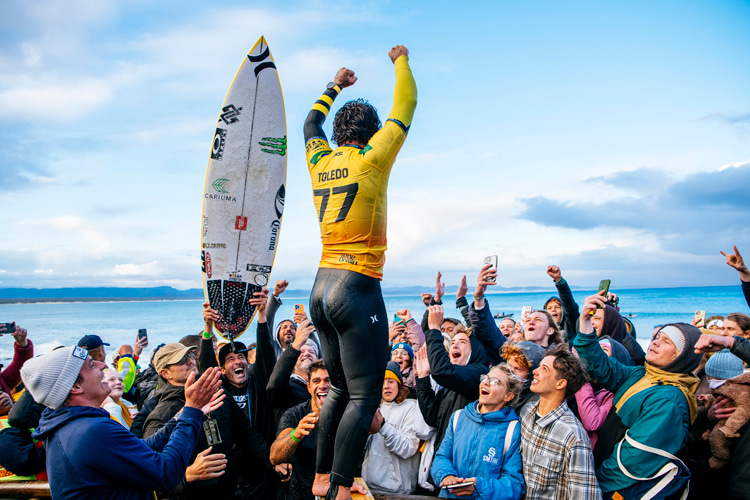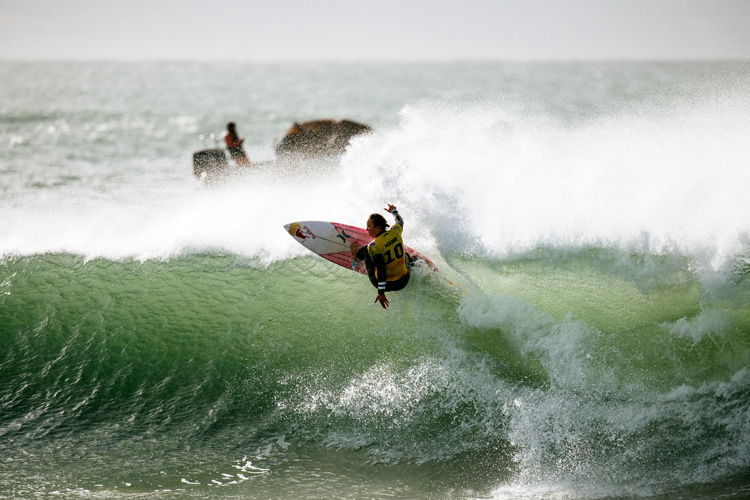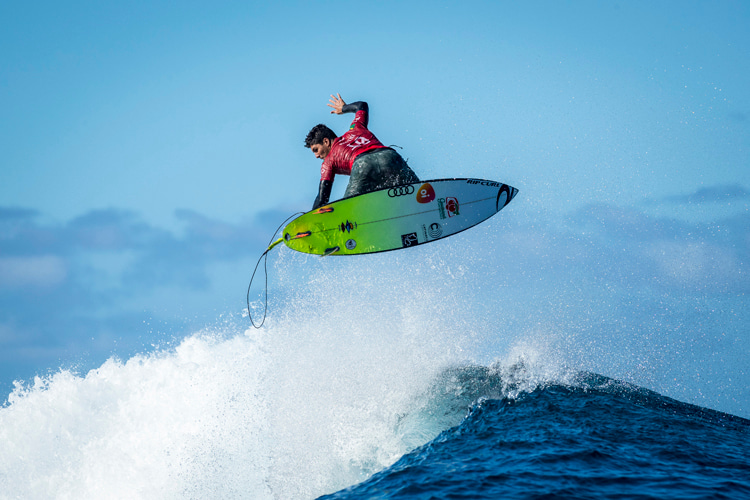In 2023, the World Surf League (WSL) launched the Championship Tour (CT) Shaper Rankings, an initiative to highlight the creators behind the surfboards that make the magic possible.
As an integral part of the surfing community, shapers have historically been the unsung heroes of the sport.
The CT Shaper Rankings now offer an opportunity to turn the spotlight on their vital contribution and influence on surfer performance.
The formula is similar to the Formula 1 Constructors' Championship and somehow adds another gamification layer to professional surfing, including a third-world title battle.
The mechanics behind the ranking system are straightforward and objective.
Board builders are awarded points based on the performances of the surfers they sponsor, in the same vein as the traditional CT rankings for surfers.
A surfer's results in an event will correlate directly to the points earned by their respective shaper.
The surfer's performance on a specific board will hence contribute to the shaper's standing in the rankings.
Each event in the Championship Tour is crucial for board builders as their ranking can fluctuate dramatically based on surfer performances.
Several factors make certain boards and shapers more successful in certain events than others, such as the specific design of the surfboard and its suitability to the wave conditions, a surfer's familiarity with a particular board, as well as the ability of the shaper to tailor the surfboard to the surfer's style and the characteristics of the wave at a specific location.

Season One: 18 Shapers for 51 Surfers
Surfers typically have partnerships with specific shapers or brands that they use in their professional careers.
Some surfers might stick with one shaper throughout the tour, while others might tap into the local knowledge and use a local shaper in specific locations.
Interestingly, not all surfers are treated equally by shapers.
Some surfers receive free surfboards and even get paid to ride a shaper's boards, while others might have to purchase them.
The dynamics of surfboard shaping at this level are complex, with shapers who might not have had representation on tour for years suddenly breaking through due to the success of a surfer riding their boards.
Equally, established brands like Pyzel, Sharp Eye, Channel Islands, and Mayhem have dominated the top spots in recent years due to their broad team of talented surfers and are expected to continue their successful run in 2023.
However, competition is fierce, with teams like DHD boasting a rejuvenated Stephanie Gilmore and an array of rising talent expected to challenge the established household names.
In the surfboard-shaping world, the landscape can shift quickly with new breakthroughs in board design and technology and the emergence of new surfing talent.
The inaugural Vissla CT Shaper Rankings are thus set to bring a new dimension to the Championship Tour, adding another layer of interest and intrigue for fans.
It kicked off with 18 surfboard construction brands for 34 male and 17 female surfers. They are:
- Sharp Eye (11 surfers);
- Mayhem (7 surfers);
- Channel Islands (6 surfers);
- DHD (6 surfers);
- Tokoro (3 surfers);
- Pyzel (3 surfers);
- Firewire/SD (2 surfers);
- JS (2 surfers);
- Pang (2 surfers);
- Sparrow (1 surfer);
- Borst (1 surfer);
- Stamps (1 surfer);
- Rusty (1 surfer);
- OHP (1 surfer);
- Cabianca (1 surfer);
- Patterson (1 surfer);
- SMTH (1 surfer);
- Bradley (1 surfer);
It is not only an acknowledgment of the role that shapers play in the success of surfers but also a way of further integrating the broader surf community into the narrative of the Championship Tour.

The Scoring System
The Vissla CT Shaper Rankings only start counting performances from the quarterfinals onwards.
As a result, shapers only receive points if their surfers finish in the quarterfinals or higher.
Consequently, a maximum of 16 potential placings per CT event can contribute points to a shaper's total (8 in the men's competition and 8 in the women's).
The 16 potential placings indicate that in a typical surf competition, once it reaches the quarterfinal stage, eight surfers remain in the men's category and eight in the women's category.
As each surfer progresses from the quarterfinals to the finals, they improve their position, and subsequently, their shaper earns more points.
The exact distribution of these points may vary depending on the rules set by the WSL.
The overall rankings are then combined across the entire season, which begins at the Pipe Masters in Hawaii and ends at the Tahiti Pro event.
This cumulative total determines the winner of the Vissla CT Shaper Rankings for the season.
This aspect of the scoring system emphasizes the importance of consistent high-level performance, rewarding shapers whose surfboards facilitate successful runs deep into the competition.
It also adds an exciting element of suspense, as shapers can make significant leaps on the leaderboard towards the end of the season, mirroring the thrill and unpredictability of the surfers' own Championship Tour rankings.
Potential Improvements
While the concept behind a surfboard-shaping team competition can be exciting, there's always room for improvement.
For instance, it would make sense to integrate environmental sustainability into the rankings, promoting more eco-friendly surfboard production methods.
This novel consideration could include encouraging shapers to utilize less toxic materials, cleaner production methods, and responsible end-of-life disposal or recycling of their boards.
Shapers could potentially earn bonus points for demonstrating these eco-friendly practices or be penalized for failing to meet predetermined environmental standards.
This bold step would help WSL champion sustainable practices within the surfing industry and set a strong example for other sports.
Limiting the number of boards a shaper can produce for their team riders could also be interesting, potentially paving the way for grassroots shapers to earn their place in the rankings.
The decision could further foster innovation and prevent monopolization of the surfboard-shaping scene by top craftspeople.
